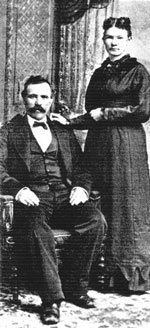While no official statements have been issued, there is a good reason to believe that no member of a union will again be employed by either the Crown Willamette Paper company or the Hawley Pulp & Paper Company. — The Camas Post, Nov. 23, 1917

The year 1917 proved to be turbulent for the nation, just entering World War I, and for local mill workers at the Crown Willamette Paper Company in Camas. The workers had simple demands — shorter work days and higher pay. Prewar economic inflation meant that everyday commodities had become more expensive while wages remained stagnated. On April 16, 1917, Camas mill workers went on a week-long strike against the second largest manufacturer of paper products in the United States. They formed a union — as many industrial workers did at that time — and were granted a token pay raise that spring. The Camas local Papermakers no. 100 had 400 members, a substantial majority of the Crown Willamette employees.
Local representatives from the American Federation of Labor affiliated organizations helped the workers of Crown Willamette form their local union. Unions like the AFL along with the Industrial Workers of the World attracted disgruntled Pacific Northwest timber industry workers into their fight against the increasing power of capital. During that turbulent summer, the IWW organized what was at the time the largest series of strikes in Washington State history. Because of the war demands on production, government and company officials branded union strikers as subversive and un-American.
The mill’s first superintendent William Lewthwaite held no affinity for organized labor. A few weeks after the first strike, Lewthwaite announced that the paper mill “would not employ union labor.”

As economic conditions worsened, Camas mill workers were left with few options. They sought union recognition and better conditions, but mill management ignored them. Consequently, the workers went on strike again in November of 1917, joined by the company’s workers at Oregon City. Unbending in his position, Lewthwaite hired replacement workers in order to keep up with production.
At one point, the company housed strikebreakers on barges docked along the banks of the Columbia and converted mill warehouses into dining halls. By Christmas the strike that threatened the economic health of the community had become a futile effort. The company simply replaced striking union members with non-union workers. The WWI crisis stymied labor organizing in Camas and most of the U.S.
Image: 1918 postcard from Camas
Newspaper article: “Paper mills will not employ union labor”
Newspaper article: “Paper company gives out circular letter”
Newspaper article: “Six girl strikers put under arrest”